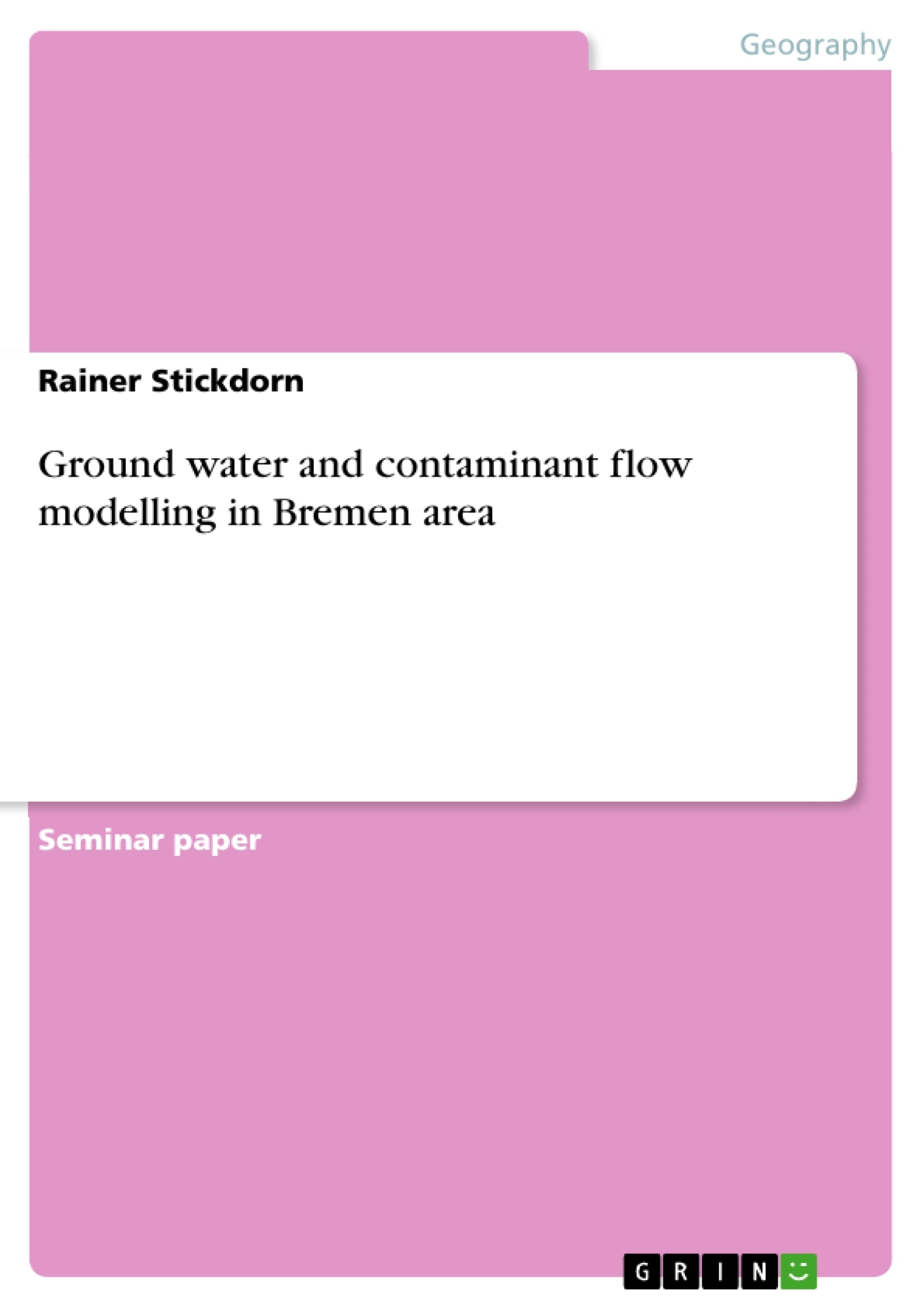In the northern german lowlands north west of Bremen and south west of river Weser a factory wants to extract 70 cubic meters of groundwater per hour. They want to pump clean water despite of a landfill as contaminant source south of the well (=upstream of the ground water flow). The well is very close to the western one of two parallel faults within the middle layer, with conductivities between 1 and 1E-9 m/s and is strongly influenced by them. The uppermost layer (= Saale) has the highest conductivity and is therefore most important for the flow regime. A MODFLOW model with 3 layers, given elevations and heads in the river and in the rim of the area was run many times to check if and how the well can can deliver the 70 cubic meters per hour of clean water.
Lowering pumping rate, displacement of the well away from the fault, is only sufficient for the case of low conductivity (closed) faults. For open (high conductivity) faults these measures are not sufficient and a cleaning well north of the landfill is necessary. By trying lower and lower pumping rates of the cleaning well the minimum extraction rate for the cleaning well was found.
Inhaltsverzeichnis (Table of Contents)
- 1 Executive Summary.
- 2 Project Description..
- 2.a Introduction.......
- 2.b Site Description........
- 2.b.i Hydrologic Setting...
- 2.b.ii Site description – more data..
- 3 Data Assimilation………....
- 4 Description of the groundwater model..
- 4a Spatial discretization........
- 4b Temporal discretization...
- 4c Heterogeneity and layering...
- 4d Solver........
- 4e Boundary Conditions.......
- 5 Discussion of Flow Model Results...
- 6 Description of scenarios..
- 6.1 Scenarios without cleaning well......
- 6.2 Scenarios with a cleaning well..
- 7 Conclusion..........\li>
- 8 Recommendation for further work.
- 8.1 Faults…………………………..\li>
- 8.2 Contaminants..\li>
- 8.3 Seasonal data..\li>
- 9 References......
- 10 Table Of Figures..
Zielsetzung und Themenschwerpunkte (Objectives and Key Themes)
The primary objective of the groundwater model is to determine if and how a well can safely extract 70 cubic meters of groundwater per hour for a new factory, situated in the northern German lowlands near Bremen. The factory seeks to avoid contamination from a nearby landfill. The model evaluates the impact of fault zones on water flow and explores the effectiveness of a cleaning well in mitigating contamination risks. This project examines the feasibility of providing the factory with clean water while considering various factors, including well location, pumping rate, and the permeability of surrounding geological formations.
- Groundwater flow modeling for a factory near Bremen
- Assessment of contamination risks from a nearby landfill
- Influence of fault zones on groundwater flow
- Evaluation of a cleaning well to mitigate contamination
- Optimization of well location and pumping rate
Zusammenfassung der Kapitel (Chapter Summaries)
- Executive Summary: This chapter outlines the key findings of the project, highlighting the need for a cleaning well to ensure clean water extraction for the factory. The well's proximity to a fault zone is identified as a crucial factor influencing water flow and contamination risk.
- Project Description: This section introduces the project's objective, detailing the location and characteristics of the well, the landfill, and the surrounding geological formations. It emphasizes the significance of fault zones and their impact on water flow patterns.
- Site Description: This chapter provides a detailed description of the Bremen area, focusing on its geological structure, the presence of multiple layers with varying conductivities, and the location of relevant rivers. It also highlights the importance of the Saale layer for water flow.
- Data Assimilation: This chapter outlines the data sources and methods used in the modeling process. It explains the use of borehole data, shapefiles, and point text files to define the model area and its properties. The chapter also discusses the preparation and integration of data into the Model Muse software.
- Description of the groundwater model: This chapter describes the spatial discretization of the model, highlighting the creation of a grid system with 62 columns and 44 rows. It also discusses the definition of layers, their properties, and the application of boundary conditions. This section focuses on the design and configuration of the groundwater model used to simulate the system.
Schlüsselwörter (Keywords)
This report focuses on groundwater modelling in the Bremen area. The study encompasses groundwater flow, contaminant transport, and the impact of geological formations, particularly fault zones, on water flow patterns. It explores the effectiveness of a cleaning well to mitigate contamination risks from a nearby landfill. The project employs MODFLOW modeling and leverages data from various sources, including borehole data, shapefiles, and point text files.
- Arbeit zitieren
- Dipl.-Ing., MSc, Rainer Stickdorn (Autor:in), 2015, Ground water and contaminant flow modelling in Bremen area, München, GRIN Verlag, https://www.grin.com/document/433459



